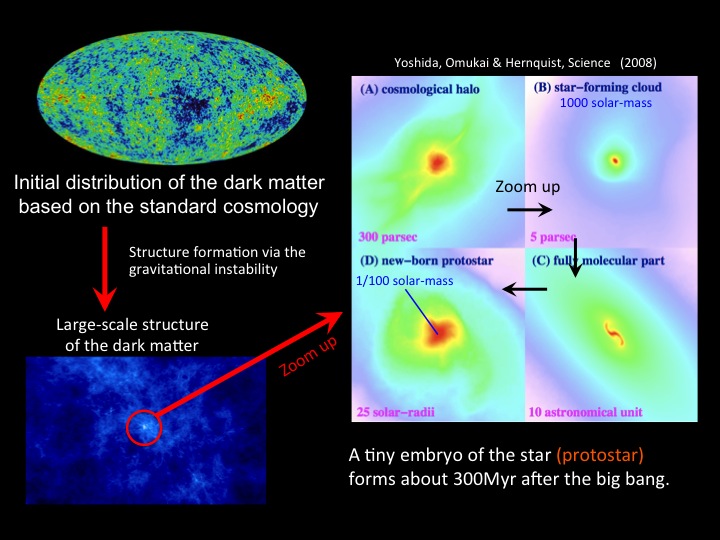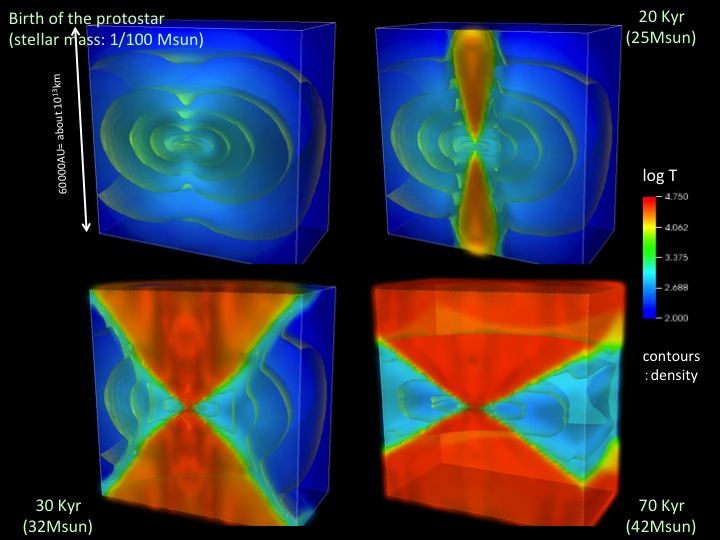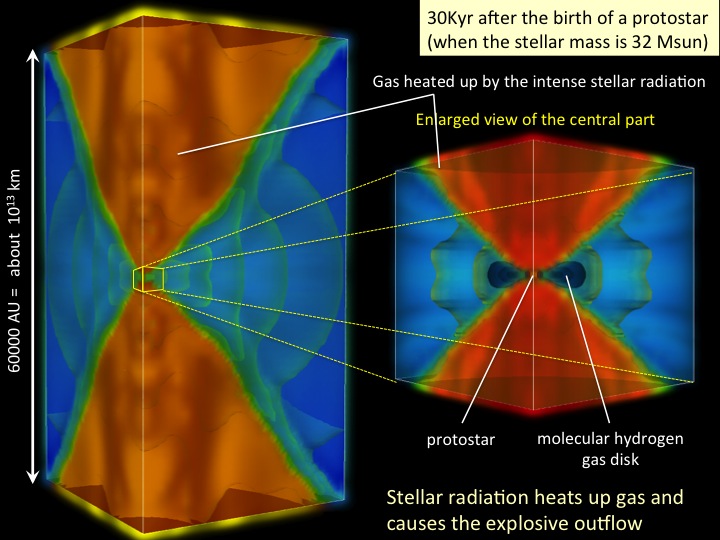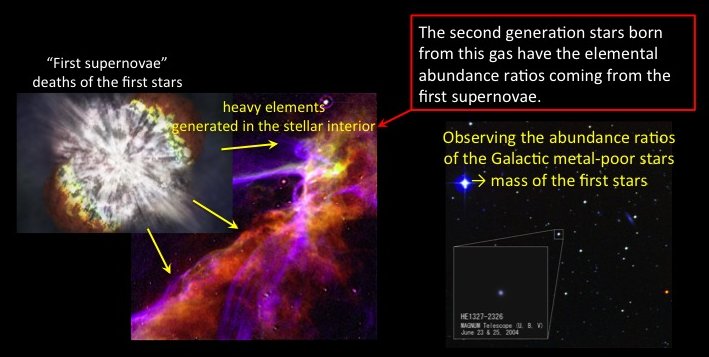The first stars fundamentally transformed the early Universe
by emitting the first light and by producing the first
heavy elements. These effects were predetermined by the mass
distribution of the first stars, which is thought to have been
fixed by a complex interplay of gas accretion and
protostellar radiation.
We performed radiation-hydrodynamics simulations that followed the
growth of a primordial protostar
through to the early stages as a star with thermo-nuclear burning.
The circumstellar accretion disk was evaporated by ultraviolet
radiation from the star when its mass was 43 times that
of the Sun. Such massive primordial stars, in contrast
to the often postulated extremely massive stars,
may help explain the fact that there is no signatures of the
pair-instability supernovae in abundance patterns of metal-poor
stars in our galaxy.
CONTACT: hosokwtk_at_gmail.com, hosokawa_at_tap.scphys.kyoto-u.ac.jp (_at_ --> @)
Background and Motivation
It is widely believed that the first stars were formed
when the age of the universe was a few hundred million years old.
At its birth, a first star is just a tiny embryo - a protostar -
with a mass of about one percent of the sun (see the figure below).
The protostar is then expected to grow by accumulating the surrounding
hot gas, but how much gas it can acquire has been largely unknown.
This study revealed the entire process of the star's growth
over a hundred thousand years until it became a real
shining star through nuclear burning.

The Protostellar Feedback Halts the Growth: First Stars Heavy but not Monstrous
Astrophysicists thought so far that the first stars could grow huge,
as much as a few hundred times the sun in mass.
However, our study presents that the star regulates
its own growth by emitting intensive radiation.
The computer simulations showed us highly dynamical features of this process
(see the figures and movies below).
When the star became as large as 20 times that of the sun, it shined very
bright, almost equivalent to a cluster of a hundred thousand of sun-like stars.
Ultra-violet light from the luminous star then quickly heated up the gas in
the vicinity to above ten thousand degrees in temperature.
The hot bubble launched a high speed gas flow outward, which eventually
evacuated the surrounding "parent" gas cloud from which the star was born.
There remained a star with a mass of 43 times that of the sun.

Movies: 1
2 (from a different angle)
3 (from a different angle)
4 (2-dimensional slice)
5 (central region of 3000 AU)

images and videos credit: NASA / JPL-Caltech / Kyoto Univ.
Solution of a Long-standing Mystery
Our numerical simulations showed us the very exciting evolution
of the first stars in the deep universe beyond our
observations. However, observers have found signatures of the
first stars in the elemental abundances of very old stars
in our Galaxy (see the figure below).
They searched for the signatures of the "monstrous" stars
of hundreds of solar-masses, but could not find them.
Instead, recent observations all support that the first stars should have
been the massive stars of several tens of solar-masses.
Such ordinary massive stars, in the sense there are indeed such stars
with similar masses in the present-day Universe, are really resulting
from our simulations.
We provide a solution for the long-standing problem and
now successfully propose a novel theoretical model of the evolution
of the universe at its infancy.

LINK
+
link to the article (Science Express)
+ IPMU News
+
NASA JPL release



